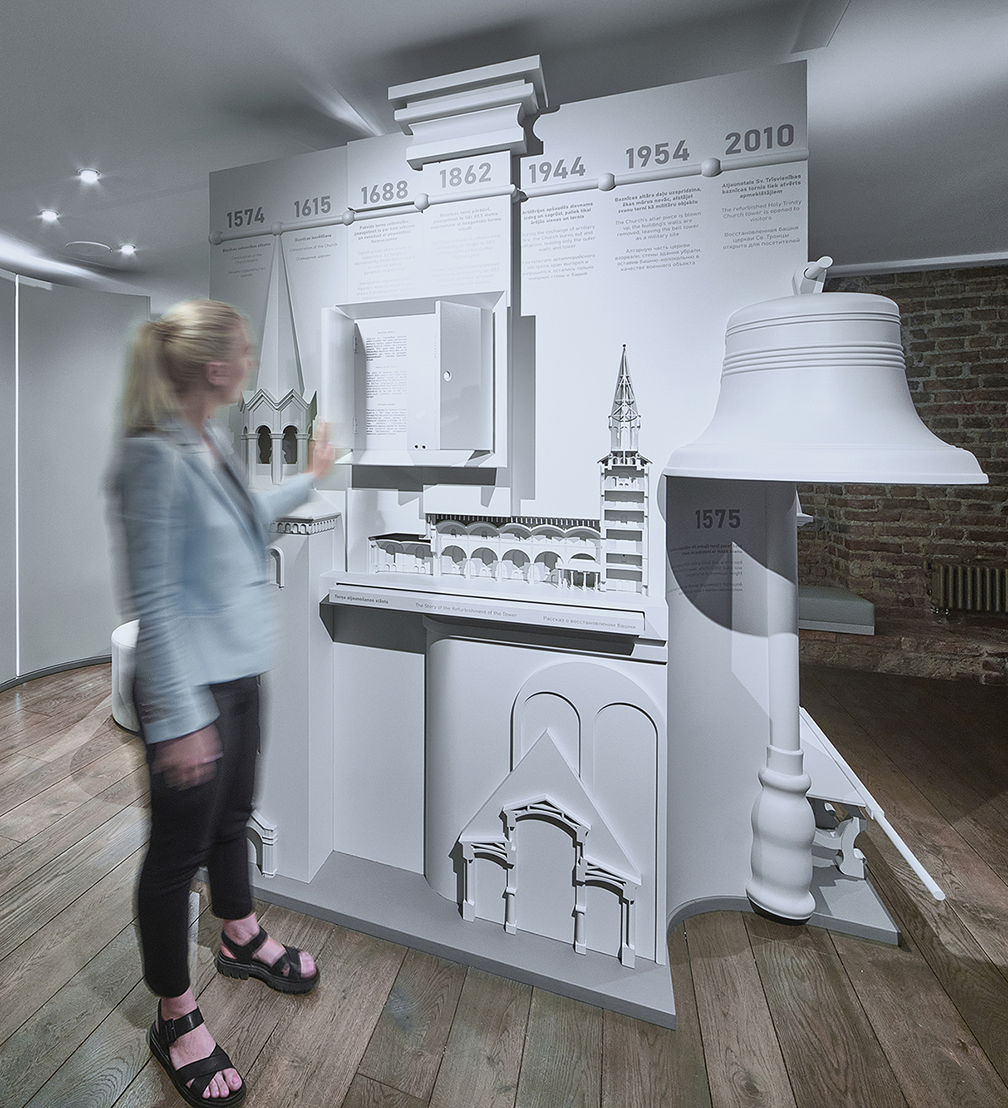
The permanent exhibition of the tower of the Jelgava Holy Trinity Church was created by clearly separating the historical heritage from the modern addition. Stories about the history of the city and the development of fashion in the 16th–20th centuries, as well as the lost church interior and architectural details are revealed to visitors through the interaction of physical and digital exhibits.
The exhibition of Jelgava Holy Trinity Church tower is interactive and integrates modern technology, which allows visitors to get to know the history of Jelgava step by step. When entering the space, visitors can see the exhibits and their descriptions, while the invisible part of the exhibition is hidden in various mechanically movable elements and multimedia. «Such a principle of exploring the exposition allows not only to create a space not oversaturated with information, but also makes visitors interested in seeing the invisible, hearing the inaudible, feeling the lost Jelgava,» says Didzis Jaunzems, the leading architect of DJA.
He points out that the design principles of the exhibition are borrowed from the method used in the restoration of the church, where the lost parts of architecture are marked on the pavement and fragments of the demolished walls near the tower are preserved, thus allowing visitors to imagine how the building once looked. The exhibition is painted in a monolithic light grey colour, which both allows to create a homogeneous, sculptural interior, and makes a reference to the historical bright interior of the church.
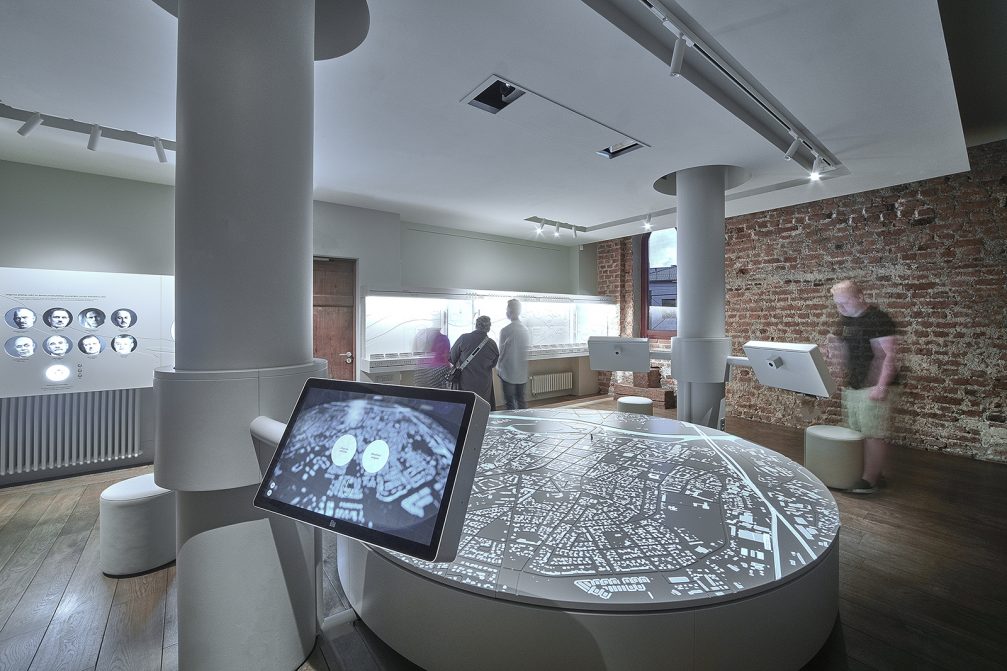
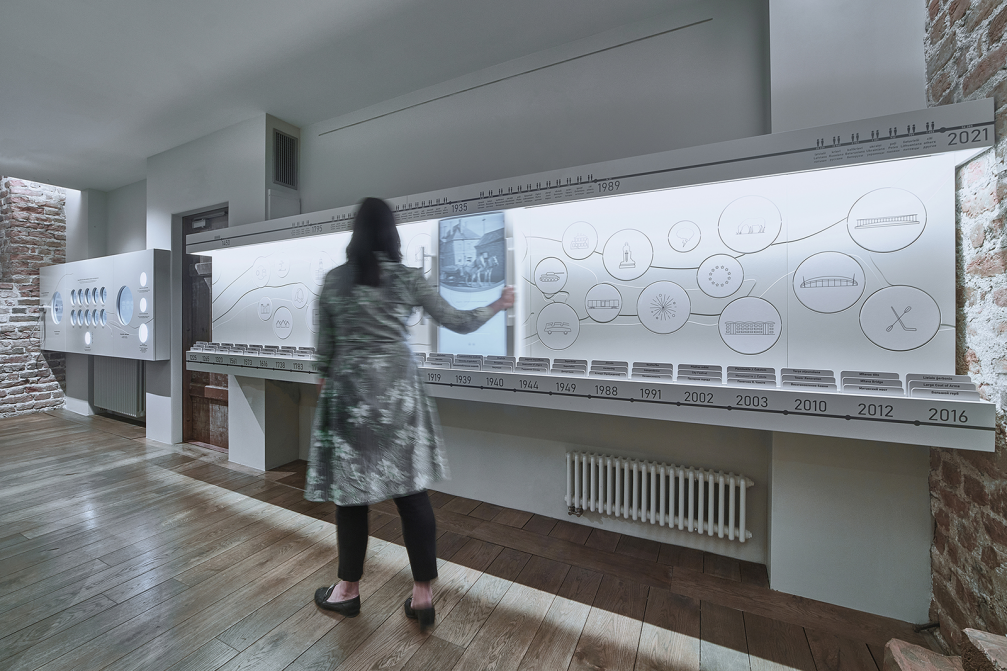
Each exhibition floor talks about a different theme. On the first level, located on the 3rd floor of the tower, visitors can learn more about the history, development, and symbolism of Jelgava, as well as prominent townspeople. With the help of augmented reality, the city model in the centre of the room allows visitors to get to know the planning of Jelgava in different periods as a real-time video. To explore historical events arranged in a timeline along the walls, visitors can slide the touch screen.
On the floor above, an exhibition about fashion in Jelgava through the 16th–20th centuries is located. Upon entering the space, visitors are greeted by virtual life-size models showcasing historical costumes on screens. Continuing the idea of dual reality, the digital fashion show is complemented by various physical details of the clothes. In the part of the exhibition dedicated to fashion, visitors can also learn about the development of wedding dresses and historical jewellery, as well as try some on digitally.
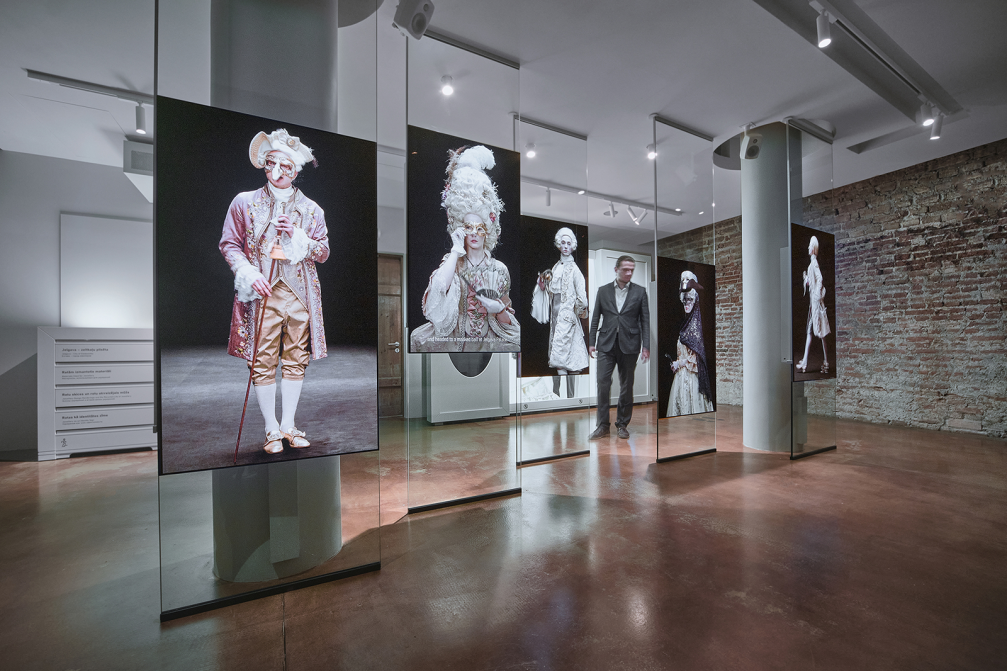
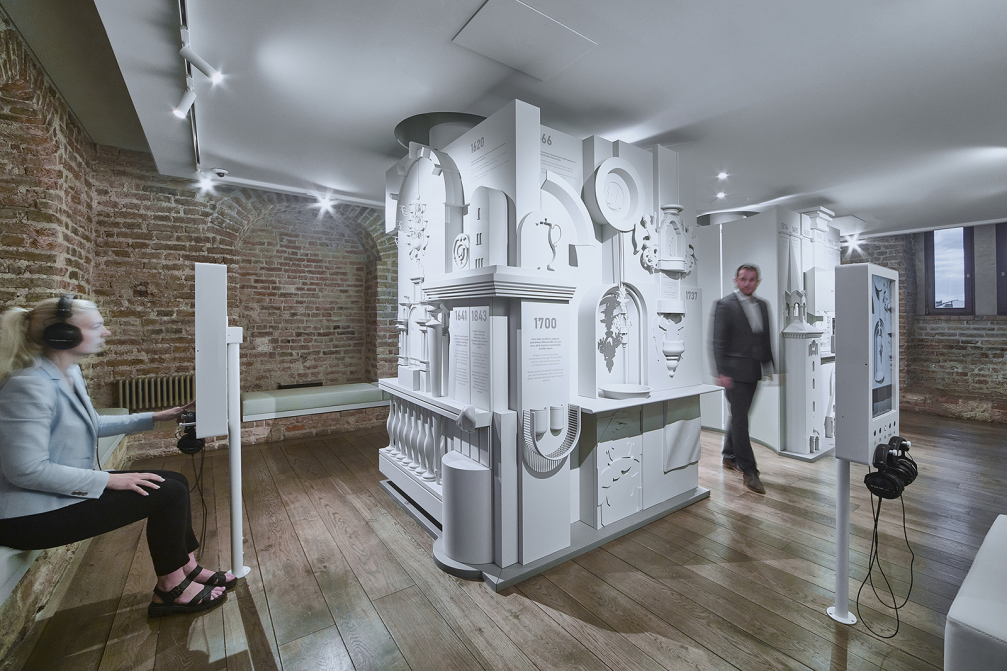
On the upper floor of the exhibition, the lost parts of the church and interior details are reproduced in different scales and fused into a single sculptural object. As in the other rooms, designers have created visible and hidden parts of the exhibition. In the digital environment, monochrome exhibits are given detail, materiality, and colour. A meditation room is located in the centre of the space, where vertical slits built into the curved walls allow visitors to get a glimpse into the historical interior of the church as through the door gap.
More information about the exhibition Dual Reality — on the DJA website. Technologies and management by Solavi, production and technical design by Yes We Can, multimedia by Putnu Studija, programming by Overly.
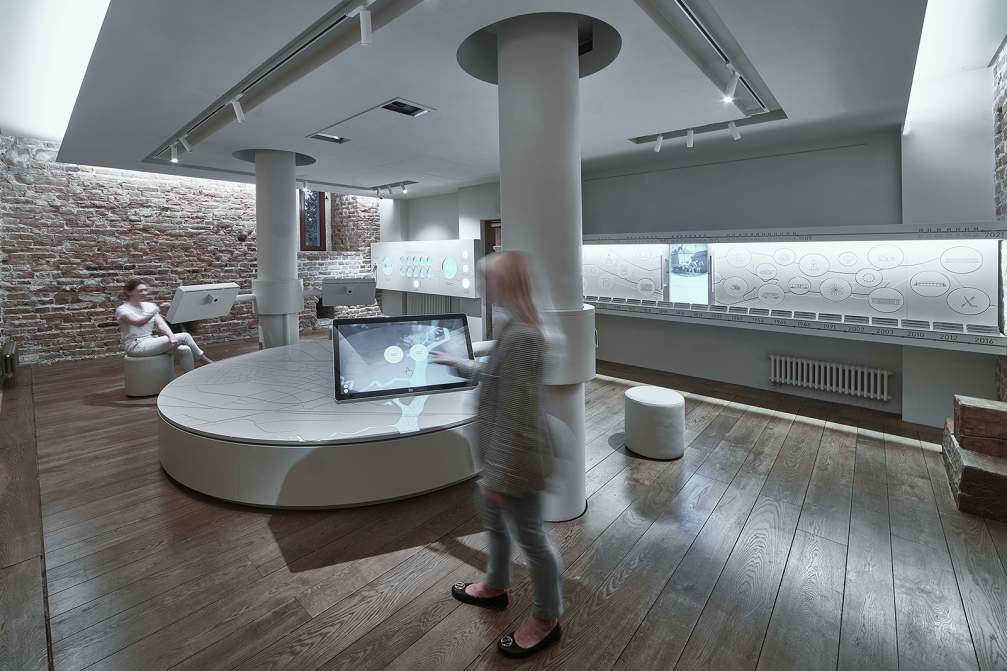
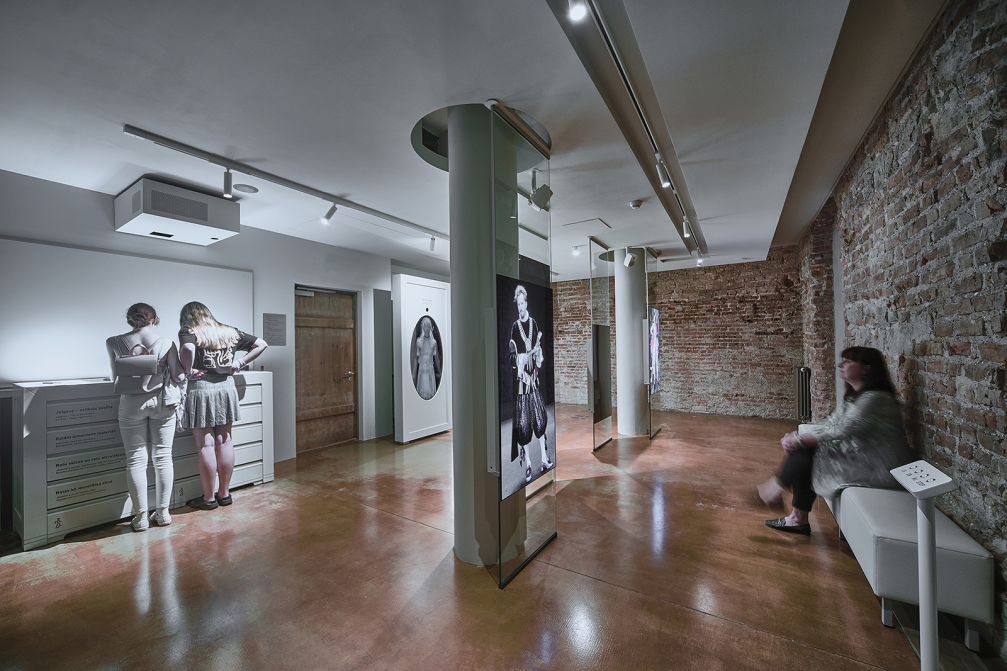
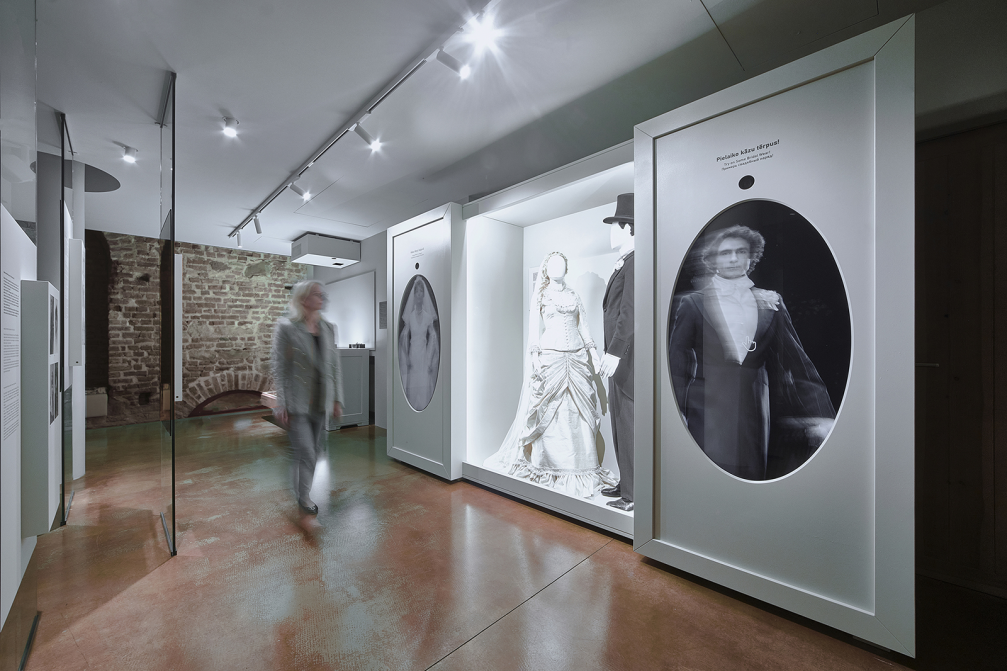
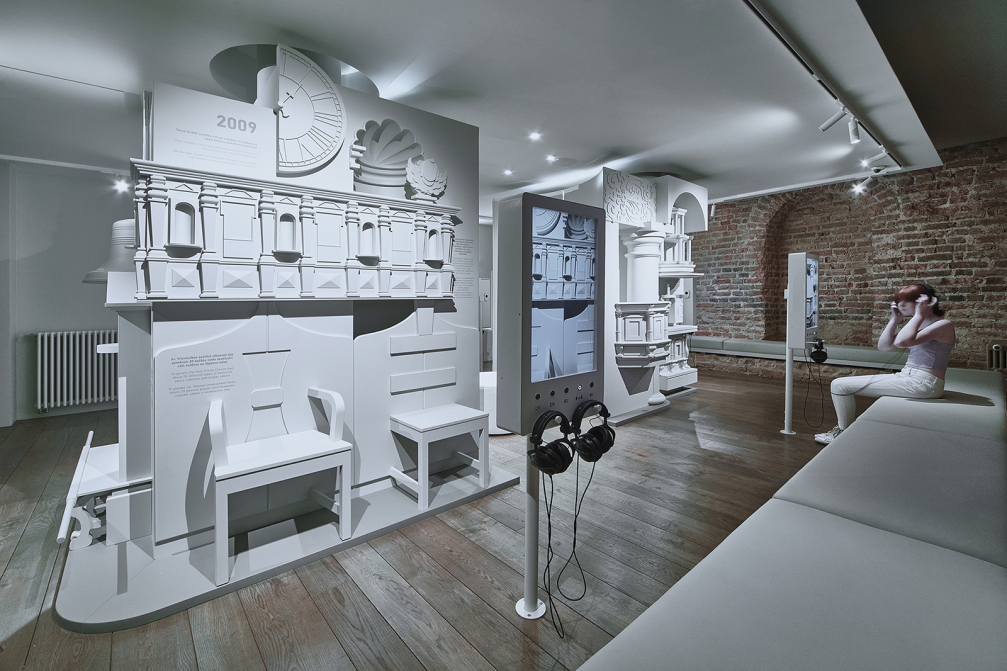
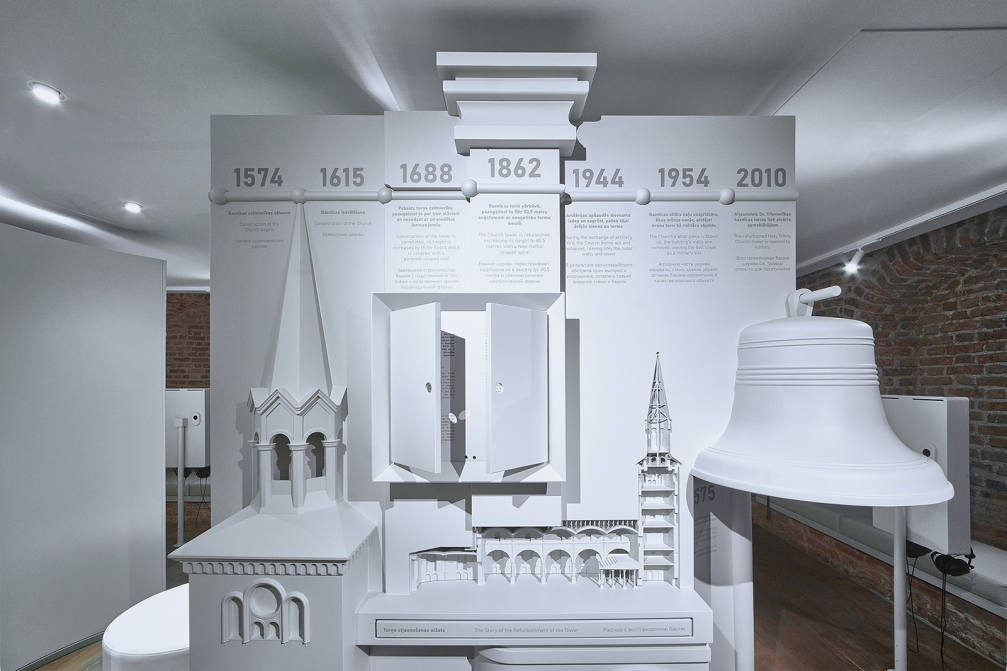
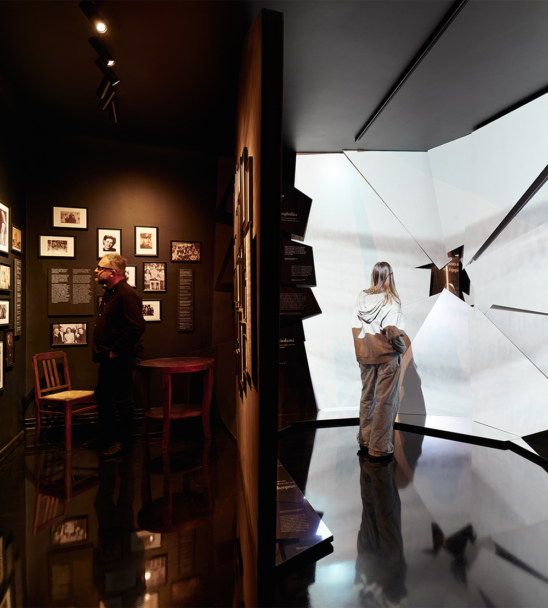
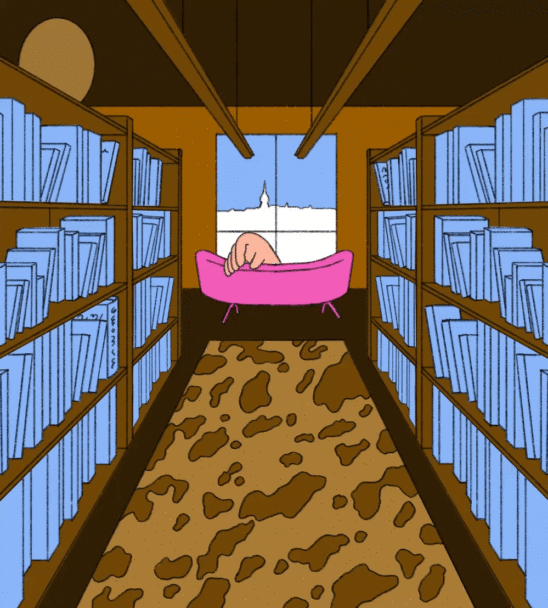
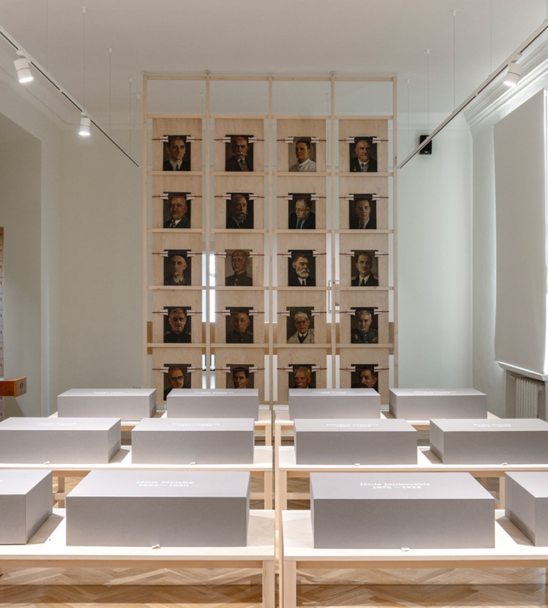
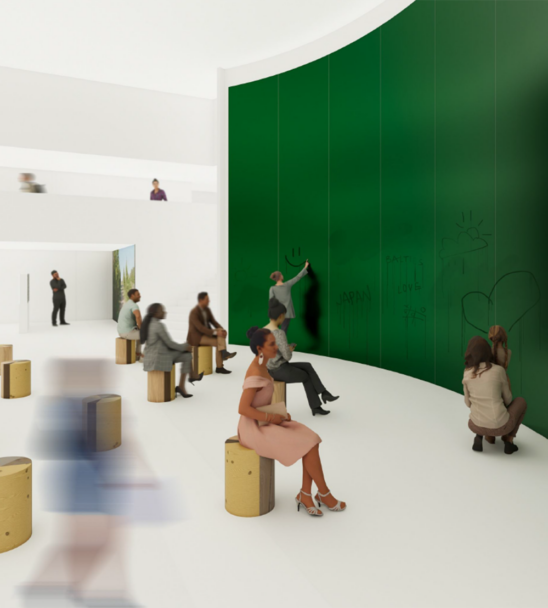
Viedokļi